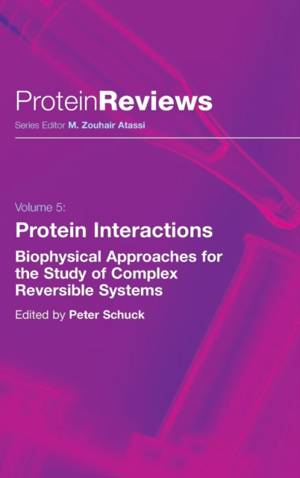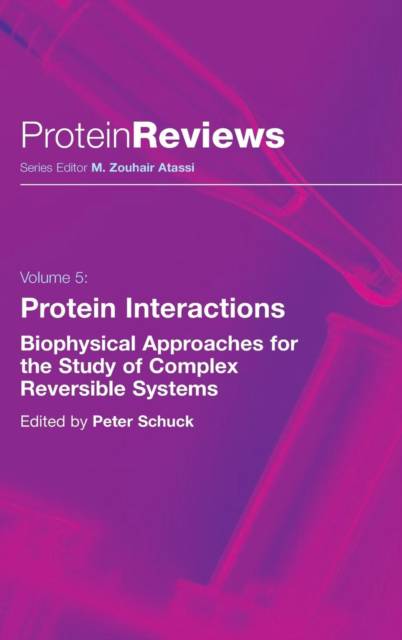
- Afhalen na 1 uur in een winkel met voorraad
- Gratis thuislevering in België vanaf € 30
- Ruim aanbod met 7 miljoen producten
- Afhalen na 1 uur in een winkel met voorraad
- Gratis thuislevering in België vanaf € 30
- Ruim aanbod met 7 miljoen producten
Zoeken
Protein Interactions
Biophysical Approaches for the Study of Complex Reversible Systems
€ 307,45
+ 614 punten
Omschrijving
When I was invited to edit this volume, I wanted to take the opportunity to assemble reviews of different biophysical methodologies for protein interactions at a level suf?ciently detailed to understand how complex systems can be studied. There are several excellent introductory texts for biophysical methodologies, many with hands-on descriptions or embedded in general introductions to physical b- chemistry. The goal of the present volume was to present state-of-the-art reviews that do not necessarily enable the reader to carry out these techniques, but to gain a deep understanding of the biophysical observables, to stimulate creative thought on how the techniques may be applied to study a particular biological system, and to foster collaboration and multidisciplinary work. Reversible protein interactions involve noncovalent chemical bonds, pro- cing protein complexes with free energies not far from the order of magnitude of the thermal energy kT. As a consequence, they can be highly dynamic and may be controlled, for example, by protein expression levels and changes in the intracel- lar or microenvironment. Reversible protein complexes may have suf?cient stab- ity to be puri?ed for study, but frequently their short lifetime essentially limits their existence to solutions of mixtures of the binding partners in which they remain populated through dissociation and reassociation processes. To understand the function of such protein complexes, it is important to study their structure and dynamics.
Specificaties
Betrokkenen
- Uitgeverij:
Inhoud
- Aantal bladzijden:
- 532
- Taal:
- Engels
- Reeks:
- Reeksnummer:
- nr. 5
Eigenschappen
- Productcode (EAN):
- 9780387359656
- Verschijningsdatum:
- 20/04/2007
- Uitvoering:
- Hardcover
- Formaat:
- Genaaid
- Afmetingen:
- 240 mm x 166 mm
- Gewicht:
- 1283 g

Alleen bij Standaard Boekhandel
+ 614 punten op je klantenkaart van Standaard Boekhandel
Beoordelingen
We publiceren alleen reviews die voldoen aan de voorwaarden voor reviews. Bekijk onze voorwaarden voor reviews.










